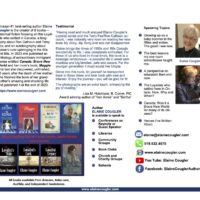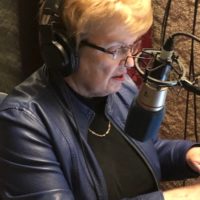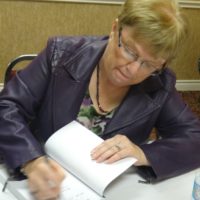
One of the interesting parts of being a writer is that I come in contact with loads of others who are following the same path. Purabi Sinha Das is a lovely, interesting writer I met during my time as a member of the Writers’ Community of Durham Region and I am so glad I did.
Purabi, originally from India and now settled in Canada, writes literary fiction, poetry and personal essays. Her short stories and poems published in literary journals and community newspapers are inspired by her travels, life in general and growing years in a small town in Bihar, now in Jharkhand.
Purabi has a BA with Honours in English literature from Ranchi university, India. She has been a Marketing Specialist, Human Resources Manager, mentor to high school and university students, travelled around the world and survived an earthquake. Purabi’s great passion is to bring joy to people through her stories, poems and articles in which sometimes you may even find a glimmer of magical realism.
In her debut collection of essays – What will it be this time – Purabi takes the reader on a journey through her growing years in India and confirms an immigrant’s life in a new country while daunting can also be exhilarating. Moonlight – The Journey Begins is Purabi’s first novel and I caught up with her for an interview about her journeys, both in writing and in life.
Purabi Sinha Das Author Interview
- Why did you choose Chandni’s story for your novel? Does it have any personal links to your own history?
Moonlight – The Journey Begins is fiction. All characters and places are products of my imagination. However, as we know every fiction is inspired by something, my book was inspired by my great-grandmother’s purple wedding sari that had been specially made for a nine-year-old girl. Yes, she was a child-bride. I remember, when I was young, I used to try to wrap it around me because I loved the colour and gold motifs on it. My mother must have known about my feelings although I did not articulate them and gave it to me to keep. My paternal grandparents passed away before I was born so to possess this link with one of them is beyond magical.
- How old were you when you came to Canada? Tell us some of the struggles you experienced. Did those struggles affect your writing?
I was in my early twenties when my husband and I immigrated to Canada. Those early years, when I look back, seemed to be filled with an equal measure of excitement and homesickness. Somehow, my upbringing – protective as it was – could not deter me from embracing life in a strange country with arms wide open.
There were moments of frustration, I must admit. I can’t call this struggle; rather, shock and disappointment to learn that Canadians knew very little about India. In the Indian school syllabus world geography plays an important role which gave me an advantage – I had a fairly good knowledge about the various provinces of Canada, their natural resources, fruits and vegetables, and the names of major cities.
The sub-continent of India is diverse, divided into twenty-eight states with as many dialects, food, clothing, mannerisms, customs and traditions. Even facial features of people differ from state to state. When I was asked where I was from it was easy to respond. But when my child, born and brought up in Canada, was asked the same question it made me think. Children of immigrant parents from the Indian diaspora face this dilemma; the more I saw it happening the greater grew my resolve to tell stories from the Indian point of view to the people of Canada. My hope is that my writings will open a window for children of immigrant parents from India into their heritage and roots; and, they will feel proud to belong to two great nations of the world.
- Compare your life in India to your life in Canada. What have you lost and what have you gained?
I was raised in a culture where girls were not supposed to work (it’s changing now) for a living although education was a must. This influenced my decision to get a job as soon as it was possible upon arriving in Canada.
In India, a family lives under the same roof until children marry and move away. We were four siblings living with our parents in a sprawling house with a number of gardens that had shady trees, rose bushes and other flowering shrubs, a deep well and vegetables patches. I miss the togetherness of family here.
Life in India was certainly different. Let me elaborate. I did not know how to cook, clean a house, wash clothes having never done them growing up. Yet, my husband and I adapted to a new lifestyle quickly in Canada taking each day as it came. How was that possible? I have a sneaking feeling that building life in a new country and making our own decisions, even with the knowledge they may not always be right, made us feel grown-up. The first time I cashed a cheque in a Toronto bank was a red-letter day for me. I had never even entered a bank in my life, never signed a cheque. Our parents did everything. My husband, who with a similar background but being male enjoyed far greater privileges – something which I craved for – and I, raised a family in Canada without the comforting presence of parents.
During those early years while building a home for us and our family – as if for the first time – I noticed how men and women in Canada worked at all kinds of jobs. It felt liberating. Now, here’s dignity of labour, I told myself.
- What is your writing regimen? How did you organize yourself to complete this book?
My day starts quite early in order to fit in a walk, run, meditation followed by emails, social media, telephone calls. Afternoons are best for writing.
I had been working on this book for several years; starting with hastily scribbled notes on pieces of paper and when the pages became increasingly difficult to file, writing in a spiral notebook. I wrote short segments like vignettes, workshopped them among my peers and noted the interest the story generated which convinced me that I was on to something. But life happened and it was shelved.
Then I quit my job in 2015 chief reason being this book was calling me and I had to follow the path wherever it led. In the meantime, I wrote short stories, poems and personal essays always returning to the 10th. or was it 15th. draft of Moonlight – the Journey Begins. It wasn’t until the summer of 2020 during the height of the pandemic that I felt the story was ready for the world.

- I noticed the rather seamless movement from Chandni’s point of view to her husband’s point of view. Was that done intentionally, with no break between paragraphs to indicate the POV change?
One reason is I wanted to get more than one reaction to what is being done and what is being said. Also, to show the contrast in their personality, culture and ideology this had to be done right away. I wanted the reader to get to know them through Chandni and her husband’s interactions with each other. However, since Chandni is the main protagonist, I have allowed a scene to end with her thoughts or observation ensuring she is central to each scene.
- As I read this book, I was reminded of other books about India, but they are mostly about other nationalities. How do you think Britain’s colonization of India for so many years affected India’s stories? Can you envision what might have been without that outside influence?
Stories influenced by Britain’s colonization of India were written by writers like Rudyard Kipling, E.M. Forester, M.M. Kaye to name a few. India has had her own writers, novelists and poets from time immemorial and too many to name here. The one name I will focus on is Rabindranath Tagore: poet, novelist, essayist, playwright, painter, traveller, and a Bengali. Tagore’s Gitanjali, a collection of poems he translated into English with an introduction by William Butler Yeats, won the Nobel prize in literature in 1913. Tagore was awarded a knighthood which he returned in 1919 in protest against the Amritsar Jallianwallah Bagh massacre in which British troops fired on a large gathering of unarmed Indian men, women and children. Tagore travelled extensively through Europe, America and Asia to lecture and during his lectures he spoke eloquently for his homeland’s struggle for freedom from British rule. Unfortunately, Tagore did not live to see India’s independence passing away in 1941. India became a free country on August 15, 1947.
Tagore’s stories tell us that human relationship – whether between husband and wife, mother and child, master and servant – is the cornerstone of life. Take it away and you are left with nothing. These stories are written in simple Bengali, some with a rural setting while others have a city as a backdrop.
European influence in India is obvious in the use of the English language throughout the country and in the practise of the Christian religion; some French and Dutch language in Pondicherry in the southeast and in Goa.
- What else have you published?
What Will It Be This Time, a book of personal essays was published in April 2020. I am currently working on a collection of short stories, poems and travel vignettes with a glimmer of magical realism and hope to have it published in the Spring of 2022.
- How has your history affected your writing?
In the past, India has been ruled by the Mughals, Portuguese, British and French. As we have seen in history, religion practiced by the rulers influenced local communities leading to conversion which was sometimes forced and sometimes not. So, we have a robust community of Christians living alongside Hindus, Muslims, Parsis, Sikhs, Jains, Buddhists. I grew up in a neighbourhood where ours was the only Christian (Anglican)family. My parents kept open house during Christmas and friends and acquaintances dropped in from far and near. In the same way, we celebrated other festivals with great joy. This openness, a sense of belonging, having the knowledge that our neighbours had our back formed the fabric of my upbringing. I think the fact that we have been ruled by different nationalities has, in fact, made us resilient, with a healthy appetite for knowledge about different cultures. Outside of India, I find not too many really know about Indian culture which is, of course, not just one but many comprising every Indian state. Being Bengali, my stories have a natural bend towards this particular culture and language.
- What is your favourite thing to read? Genre? Format? Culture?
I read almost anything – literary romance and mystery, historical fiction, non-fiction as in biography and autobiography, poetry and essays. Sometimes I read to research and sometimes simply for the joy of reading. My parents encouraged any form of reading and our house had many, many books, from classics to comic books, to the Book of Knowledge which was a beautifully illustrated 12 volume set. Our school library was a reader’s paradise but even with its vast numbers of books, it was soon evident that I had devoured them all and must needs turn to other means. And this was taken care of by my father who bought us books during his frequent business travels.
- Where can readers find your books?
There are direct links from my website purabisinhadas.com to my books and how to get a copy.
- Is there anything else you would like to tell readers?
This interview came at the right time. Thank you, Elaine. With one hectic day melding into another – what with book promotion of Moonlight – The Journey Begins, putting the finishing touches to my third book, making sure to stay in touch with family and friends – this interview made me pause in my headlong rush and reflect. Mindfulness, a conscious awareness of oneself is so important.
The pandemic has changed our lives. And we have changed in our perception of life. In the early days of the pandemic during forced isolation, I wrote so vigorously it gave me a book of personal essays which was published. That was my way of taking care of “things” or making a conscious effort to remain positive.
I would like to know what was yours?
My escape, Purabi, was the same. Thank you for asking! I lost my hurting self and my worries by writing a prequel to my Loyalist trilogy, The Loyalist’s Daughter, and now I am putting the finishing touches on a kind of a memoir about growing up in rural Ontario in the fifties and sixties. I wonder how many other creative people found their solace in their creativity?
For More of Elaine’s Writing, Try These!



